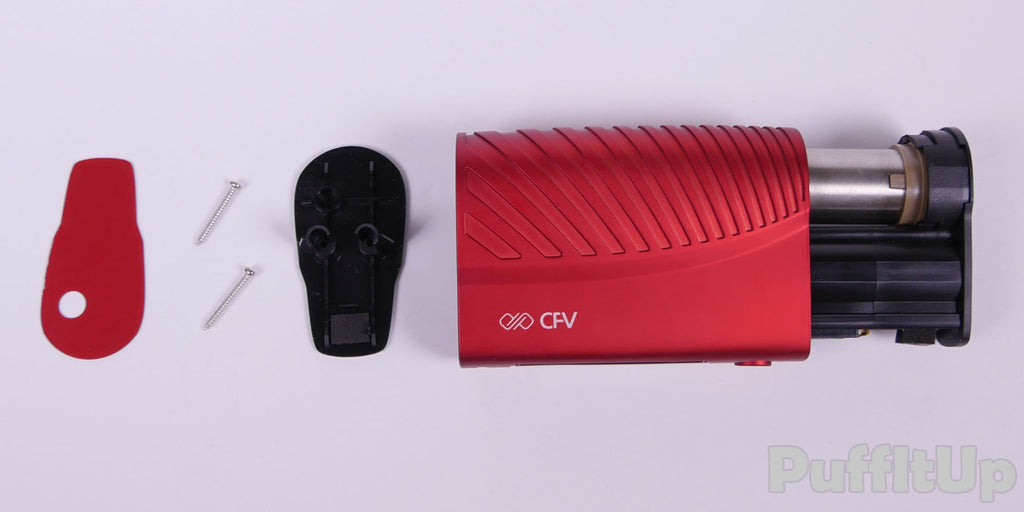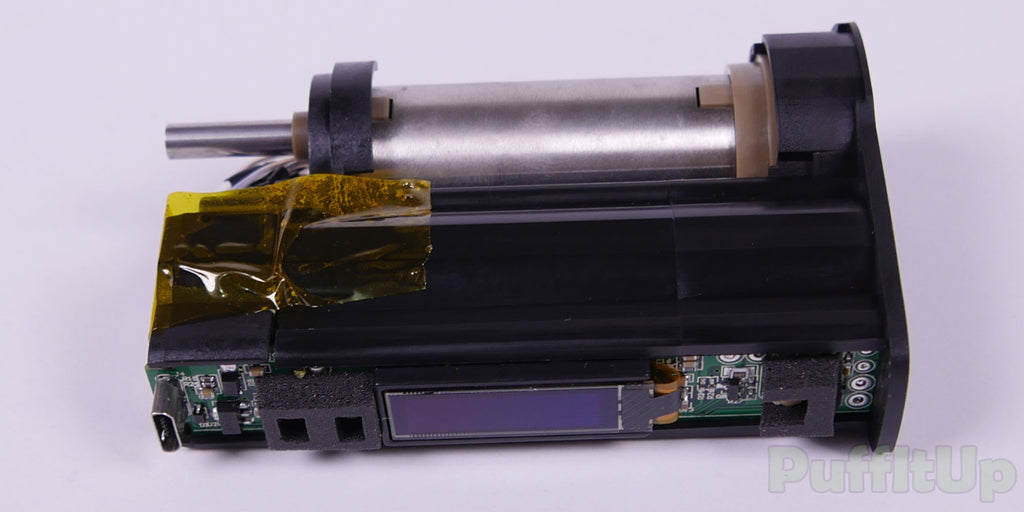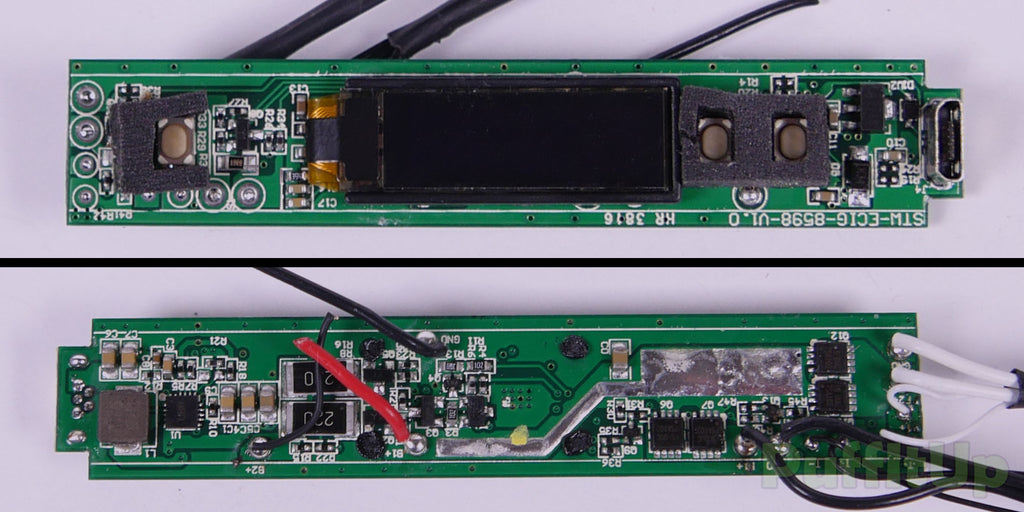
Boundless CFV - The Tear Down
Share
It's tear down time again! Today we're taking apart a Boundless CFV convection vaporizer to get a closer look at the internal hardware and figure out how it produces such tasty clouds. Time to break this bad boy open!

Here we have the CFV by Boundless in its full unbroken glory, looking peaceful and majestic in its last moments of life.

The CFV's top piece is fully modular and separates into sections for easy cleaning. The mouthpiece and screen sections can be easily removed without damaging the vaporizer. The screen holder and screen are made from stainless steel and held in place with a silicone retaining ring.

Inside the CFV's heating chamber you find the switchable chamber ring (this one is wooden), the chamber ring holder, a silicone retainer ring and a stainless steel screen.

On the left you can see the loading chamber without any insert in place and on the right you can see the airflow intake. The CFV features 5 diffused heating jets, resulting in more even extraction and more efficient use of heated air compared to an open flow.

Here's where the real breakdown begins; do not follow along at this point if you value your warranty. The mouthpiece and chamber ring are designed to be easily removed but none of the other parts are meant to be user-serviceable. The first piece we removed for disassembly is the bottom cover, allowing access to the chassis screws.

After we removed the chassis screws and bottom plate we were able to remove the protective outer shell from the internals.


Ladies and gentlemen, this is what you've been waiting to see: a naked CFV! Here you can see the convection heater along with the circuit board, digital display and wiring. High-temperature thermal tape ensures the wiring stays tightly in place.


Here we unsheathe the battery pack from its containing section, revealing two 18350 Li-ion batteries in series. Each of these 18350s is rated for 10A output and features a 6.3wh (watt hour) charge capacity. Most vapes use 18650 batteries that are physically larger than 18350s yet offer the same voltage rating. Dual 18350s in series allows higher voltage and wattage output - more wattage to the heater results in a faster heat up time and no waiting between draws.

This is where the breakdown gets serious - we had to cut the wiring between the circuit board, heater, and batteries to further disassemble the Boundless CFV.

A closer look at the circuit board and OLED digital display. The electrical transfer wires are a nice thick gauge to hold up to heavy usage. You can also see the padded button actuators on the PCB above and below the OLED screen.


The CFV's heating element is beastly; one of the biggest we've seen in a pocket portable. The dual 18350 batteries make perfect sense as it takes a lot of juice to power a heater like this one, especially in 30 seconds. The stainless steel tube connects to the airflow intake at the bottom of the unit. It's worth noting that the entire airpath is fully isolated from all electronics from top to bottom.

Here's where the CFV's magic happens! By snipping the heater's connecting wires we were able to remove the outer heater cover and expose the internal heating core and spiral air transfer piece. The heating cover and core apply heat to the spiral air path from all angles. As you draw, air is forced to travel up the heated spiral path and reach proper vaporization temperature before passing through the loading chamber. This clever heat transfer design ensures your material is only heated during draws for 100% pure convection.

Fully disassembling the Boundless CFV required breaking it beyond repair - do not try this yourself. The CFV has a great warranty but it does not cover disassembly; we took ours apart so you wouldn't need to.
If you have any feedback or would like to see a different vape taken apart feel free to leave us a note in the comment section below. Also check out our Reddit and Instagram for other vape teardowns, sales, news and reviews!


1 comment
The pictures are dead